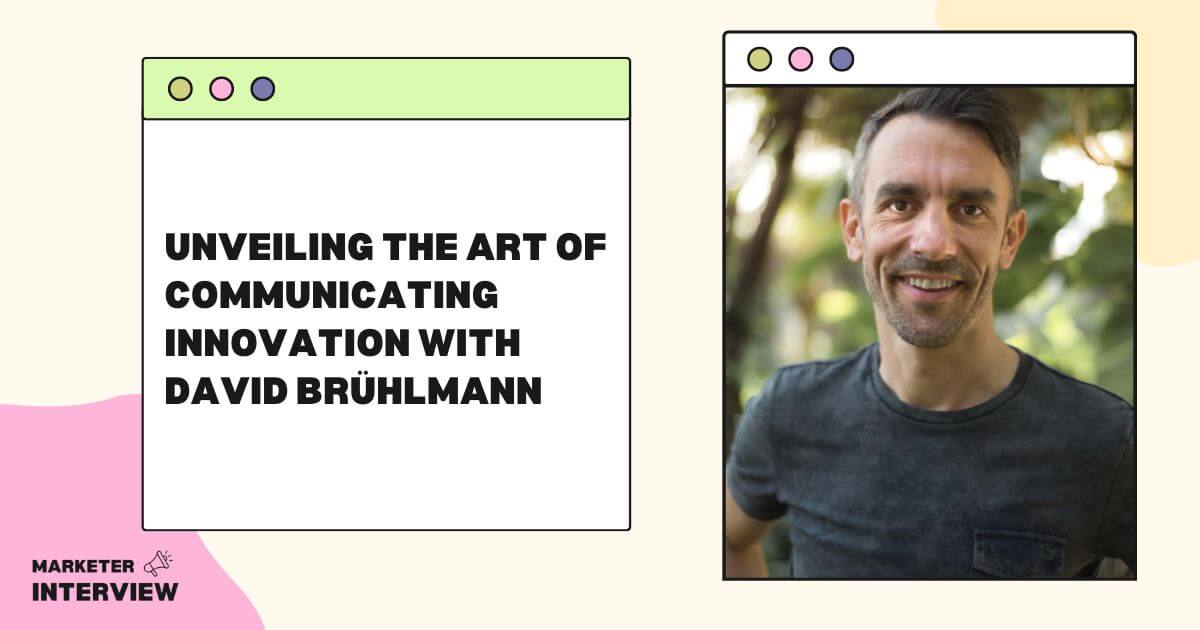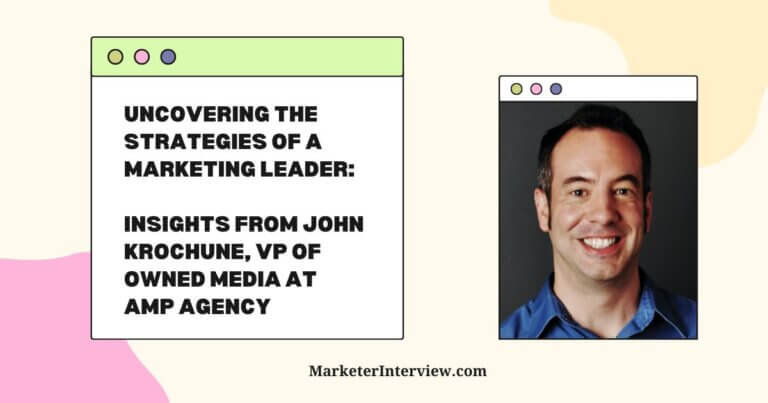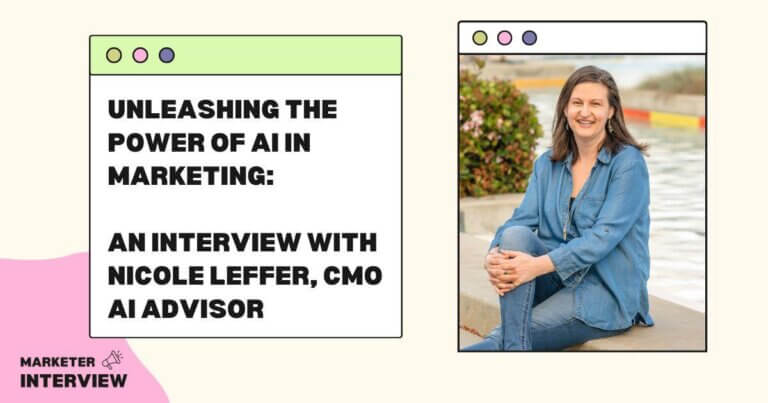Unveiling the Art of Communicating Innovation with David Brühlmann
Welcome to Marketer Interview, the go-to platform for in-depth conversations with top marketers in the industry.
In today’s interview, we enjoyed speaking with David Brühlmann, the Managing Director at Brühlmann Consulting.
Although David’s background lies in science and engineering, he has successfully ventured into marketing by empowering scientists to sell their innovative ideas effectively.
His expertise lies in innovation, science, and technology, and he excels at communicating these ideas to secure funding, people, and resources.
In this interview, we delve into David’s journey, explore the intricacies of his career, and learn about his field of expertise.
Contents
- 1 Can you tell us about your journey and how you transitioned from being a scientist and engineer to your current role as managing director?
- 2 What inspired you to focus on helping scientists develop and scale production processes?
- 3 What are the key challenges that scientists in small and medium-sized companies face when it comes to simplifying development and effective communication?
- 4 Please share some insights into your Process Scaling Kick-Start (PSKS) approach and how it empowers scientists in their endeavors.
- 5 When communicating innovative ideas to secure funding, people, and resources, what are the most crucial elements scientists should focus on?
- 6 How do you balance the complexities of scientific concepts with the need for simplicity in communication?
- 7 Can you provide examples of successful projects where you helped scientists streamline their processes and achieve their goals?
- 8 What tools or software do you find most valuable in your work when it comes to managing projects, communication, and pitching ideas?
- 9 How do you stay updated on the latest trends and advancements in innovation, science, and technology?
- 10 What are some common misconceptions about marketing for scientists and engineers, and how do you address them?
Can you tell us about your journey and how you transitioned from being a scientist and engineer to your current role as managing director?
I had an extraordinary journey in the biotech industry. Starting as a process engineer, I moved on to become a technology transfer leader and technology innovation manager. Leading talented scientists and driving innovation was a phenomenal experience.
An opportunity of a lifetime opened up to me. I have been passionate about investing in education in third-world countries. While working in biotech, I had the chance to co-initiate an education program in Cambodia.
I was offered the opportunity to lead the program’s future development, which put me in a challenging position. Should I leave my fantastic job in corporate biotech, where my career progression looked promising? After some soul-searching, I decided to move on.
Besides serving in my humanitarian organization in Cambodia, I wrote my first book, self-published it, and managed everything, from A to Z, including marketing. In the process, I started my blog, unlockmeaning.com, and began hiring freelancers.
That’s when it dawned on me: I’m an entrepreneur and love it.
As my humanitarian mission ended, I wanted to use my scientific expertise and entrepreneurial skills to help more people access life-saving therapies. That’s when I decided to take another leap of faith, starting my biotech consultancy, Brühlmann Consulting.
I now help scientists and engineers develop and scale their biotech production processes with peace of mind, removing the complexity and creating a winning roadmap for scaling up biotech production processes.
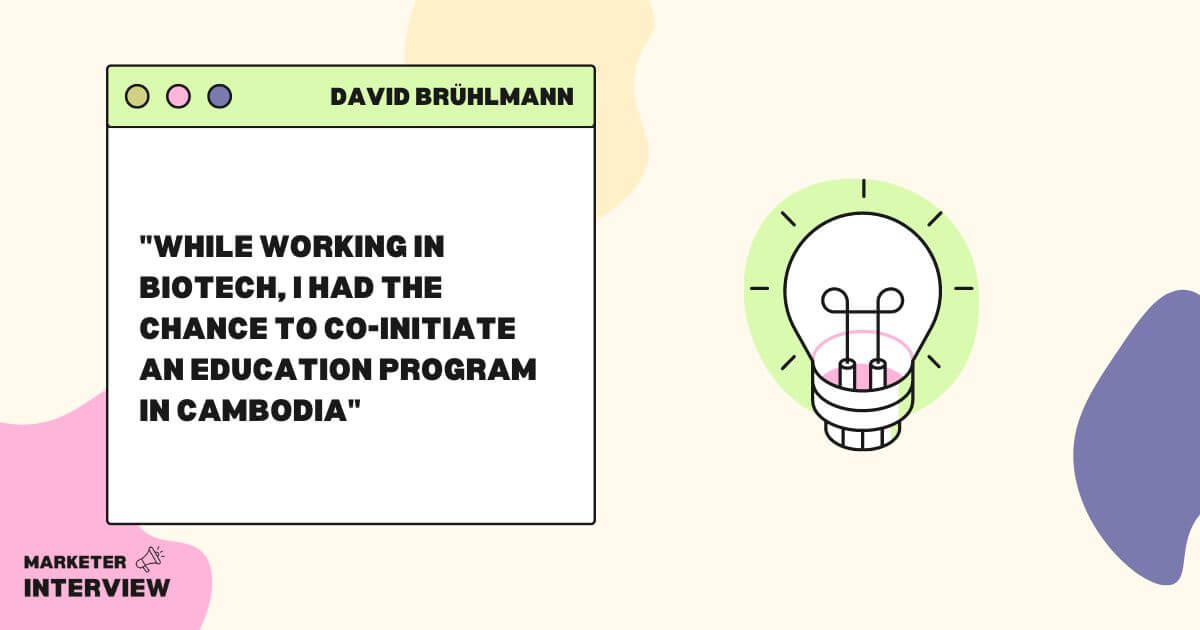
What inspired you to focus on helping scientists develop and scale production processes?
Developing and scaling up biotech production processes to commercialize life-saving therapies can be overwhelming, leading to costly delays and sometimes project failures.
I noticed multiple obstacles throughout my career as a process engineer leading so-called technology transfer projects (scaling up a production process from the lab into the manufacturing facility). “What if there was a way to easily overcome these obstacles and scale?” I wondered.
Think about it like preparing a meal for your family versus preparing the same meal for a large banquet. Getting the recipe right for your family is easy, but scaling up to feed a crowd while maintaining the same quality is a different ball game.
I felt frustrated when people asked, “How can I get my head around the complexity?” “What critical elements must I consider?”
I know how hard and complex it is to scale a biologics and cell & gene therapy production process efficiently and reliably. And I thought, “Scaling up a biotech process shouldn’t be a hit or miss.”
That led me to start my company to help scientists and engineers develop and scale their biotech production process with peace of mind.
What are the key challenges that scientists in small and medium-sized companies face when it comes to simplifying development and effective communication?
With limited resources, including personnel, budget, and equipment, it can be challenging to dedicate the time and resources necessary to streamline processes and optimize communication strategies.
Scientists may need to get creative and find ways to simplify processes while maximizing efficiency within the available resources.
Adding to this challenge is the multidisciplinary nature of biotech companies, where scientists collaborate with engineers, technicians, business professionals, and regulatory experts.
Effective communication with internal and external stakeholders becomes crucial to ensure clear understanding and seamless collaboration. However, bridging the gap between different disciplines and conveying technical information in a simplified manner can be a challenge.
Biotech witnessed rapid technological advancements and evolving best practices. Scientists in small and medium-sized companies may need help to stay updated with the latest technologies and methodologies. This can hinder the simplification of processes and effective communication, as they may need access to the latest tools or knowledge.
Scientists often need to balance scientific rigor with practicality. They must simplify processes without compromising quality, accuracy, or safety. Finding the right balance requires careful consideration of scientific principles, available resources, and operational constraints, which can be challenging in dynamic and fast-paced environments.
They may need help communicating scientific concepts effectively to non-technical stakeholders, including investors, business partners, or potential customers. Translating technical information into a language that is easily understandable and relatable to the target audience can be complex, requiring compelling storytelling and a clear value proposition.
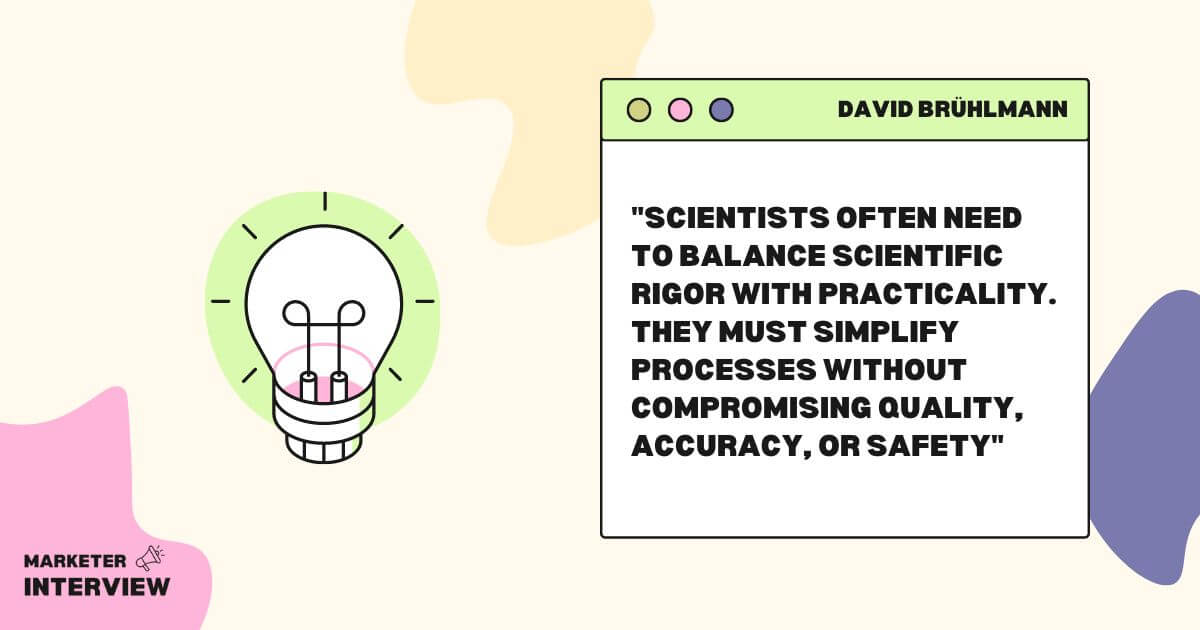
The PSKS provides a systematic and proven step-by-step process to remove complexity and create a winning roadmap for scaling biotech production processes.
It offers an easy-to-follow framework and structure and the support, coaching, and mentorship necessary to succeed.
We help scientists scale their biotech process without guesswork in three phases:
- Evaluating the current situation: Our goal is to help customers better understand their processes, including their strengths and weaknesses, as well as the therapeutic solution and in-house expertise available to ensure project success.
- Defining the desired outcome: We guide scientists past doubts about what to improve and help them create a clear vision of their future state. This involves developing a clearly defined large-scale manufacturing process, identifying the required technology, and assessing the associated risks.
- Creating a strategy: We assist our customers in developing a winning plan to scale up, which includes a step-by-step project plan, identifying the right people, and a strategy to manage all stakeholders involved successfully.
We do this because most scientists need help with process scaling. We help them create a winning roadmap so they can scale up with peace of mind and deliver their novel therapy on time.
When communicating innovative ideas to secure funding, people, and resources, what are the most crucial elements scientists should focus on?
You need to keep these 8 elements in mind to communicate your groundbreaking ideas effectively.
- Storytelling: Scientists should develop a clear and compelling narrative that effectively communicates the problem they are addressing, the potential impact of their solution, and why it is relevant and timely. Presenting a solid story can captivate audiences and generate excitement and support.
- Scientific Rigor and Feasibility: Sound research, experimental evidence, and feasibility studies are critical to demonstrating scientific rigor. Detailing methodology, experimental design, and expected outcomes increase credibility and confidence with funders and collaborators.
- Market Potential: Scientists should explain their innovation’s target market, potential customers, and competitive advantages or unique selling points. A clear path to commercialization and potential revenue streams should also be highlighted to attract investors and industry partners.
- Team Expertise: Emphasize the scientific team’s qualifications, experience, skill sets, and track record. Collaborating with industry partners, key opinion leaders, and research institutions can add credibility and increase success chances. Highlight existing partnerships or potential collaboration opportunities.
- Benefit: Highlight the potential positive impact on society and public health. Clearly explain how the innovation addresses an unmet need, improves patient outcomes, reduces healthcare costs, or contributes to solving pressing global challenges. This can appeal to funders interested in supporting projects with social or humanitarian benefits.
- Financial Projections: Present a realistic financial needs assessment, expected milestones, and timelines.
- Risk Mitigation: Show that you understand the risks and challenges associated with the project and provide strategies to manage them.
- Engaging Presentation and Visual Aids: Use visually appealing presentations to clearly and concisely communicate ideas, including data presented through graphs, charts, and infographics. Good visual aids can help to understand and leave a lasting impression.
How do you balance the complexities of scientific concepts with the need for simplicity in communication?
You have to find a balance between accuracy and accessibility. It’s like walking a tightrope – you must make your presentation simple but not simplistic.
First, you need to understand your audience:
What’s their background, knowledge, and level of detail required? Tailor your message to their needs, avoiding jargon and focusing on relevant information that resonates with their interests.
Second, don’t oversimplify or distort scientific concepts.
Instead, break down complex ideas into smaller, more digestible components. Identify the essential core concepts for stakeholders to grasp and use relatable analogies or metaphors to explain them. Finding familiar examples or real-life applications helps make the information more accessible and relatable.
Third, utilize visual aids such as diagrams, charts, or infographics.
Visual representations are beneficial in conveying scientific concepts to non-technical stakeholders. They simplify complex information by presenting it visually appealing and intuitively. This lets stakeholders grasp the main points quickly and enhances their understanding and retention of the material.
Fourth, use plain language.
Scientists must learn to avoid technical jargon, acronyms, and complex terminology. Clear and concise language allows the broader audience to understand the technology.
Finally, listen to their concerns, questions, and feedback.
By encouraging dialogue, you can gauge their level of understanding and address any gaps in their knowledge. This collaborative approach builds trust and helps tailor future communications to their needs.
Can you provide examples of successful projects where you helped scientists streamline their processes and achieve their goals?
Example 1:
We simplified the preparation and execution of technology transfers between laboratories and manufacturing sites.
We thoroughly analyzed the existing protocols, identified inefficiencies, and restructured the transfer process to optimize efficiency and ensure seamless collaboration.
Providing clear documentation, standardized procedures, and training materials facilitated faster and smoother tech transfers, saving time and resources for the scientists involved.
Example 2:
By collaborating with a team of scientists, we implemented an automated cell line development workflow that revolutionized the way to obtain well-producing cells.
We identified critical bottlenecks in the traditional process and designed a streamlined system using advanced robotics and high-throughput techniques.
This significantly reduced the time and resources required for cell line development, enabling scientists to focus more on research and innovation. And importantly, we could identify and use better-producing cell lines in our production process, thus skyrocketing the product yield.
What tools or software do you find most valuable in your work when it comes to managing projects, communication, and pitching ideas?
I’m a big fan of Notion. I use it for daily task management, project management, client onboarding, and building my knowledge vault. The high degree of customizability lets you build pretty much anything.
And I love that you can connect various databases, which enables you to build systems. And thus, Notion helps you make sense of the complexity by looking at it in terms of wholes and relationships rather than by splitting it down into its parts.
Notion also simplified my workflow and communication with my team. For instance, in the frame of my content creation workflow – for Brühlmann Consulting and my blog, unlockmeaning.com, each team member can access the relevant information from their dashboard and only view what they need to see. It pretty much-made emails obsolete.
When presenting slides to pitch ideas, I use mmhmm, which keeps me visible during the presentations. Slides are not necessary. During online meetings, people must see me.
How do you stay updated on the latest trends and advancements in innovation, science, and technology?
First, I regularly read scientific journals and publications about his field of interest. They publish cutting-edge research articles, reviews, and perspectives that provide insights into the latest discoveries and advancements.
But that’s not all – I also follow reputable websites that summarize recent scientific breakthroughs across various disciplines.
I engage with fellow scientists and researchers through conferences, seminars, and workshops, as these events provide opportunities to exchange knowledge, learn about the latest research, and establish collaborations. Networking with experts in the field allows me to stay updated on emerging trends and breakthroughs firsthand.
Attending conferences, webinars, and online courses is another excellent way to acquire new knowledge and insights. Being a member of scientific societies and associations relevant to your field provides access to newsletters, journals, conferences, and specialized events.
Finally, I made continuous learning and personal development a habit. I read broadly, seeking out books, e-books, and audiobooks on topics of interest in science, business, leadership, and beyond.
What are some common misconceptions about marketing for scientists and engineers, and how do you address them?
Marketing is often viewed as something only necessary for promoting products and services. Scientists and engineers think they don’t need to sell their work. The quality of their research or engineering project should speak for itself. Wrong.
Good communication and marketing skills are essential for reaching a wider audience, securing funding, and making your work more impactful. Using marketing principles, scientists and engineers can communicate their work effectively, build partnerships, and increase the visibility and relevance of their research or engineering projects.
Scientists need to remember that they must constantly sell their idea to their managers, senior management, colleagues, and industry peers.
They feel that marketing will compromise their credibility and the quality of their scientific work.
I regularly teach pitch training, reminding them that they need to sell their idea to get the time, people, and finances to make their game-changing idea a reality. And I show them using examples of excellent scientific communicators that you can simply communicate complicated topics without being simplistic.
